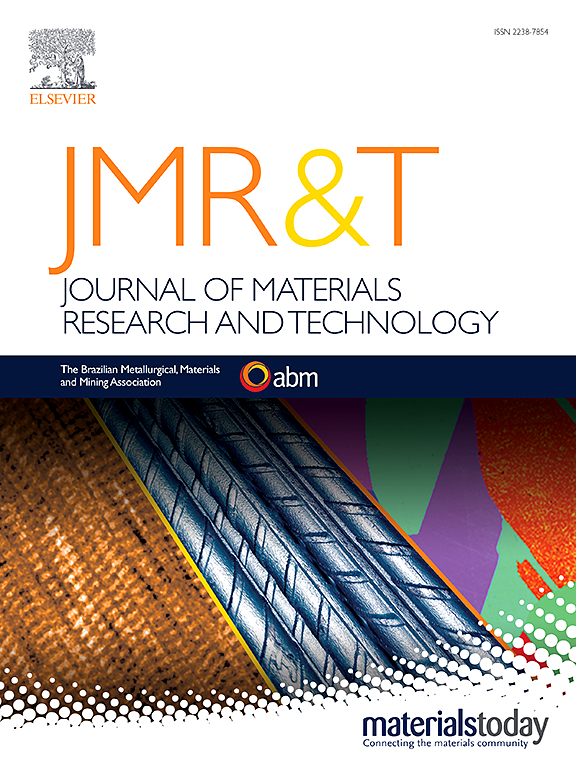The abnormal flow behavior of Mg-9Gd-4Y-2Zn-0.5Zr alloy during hot tensile deformation at high temperature and low strain rate
IF 6.2
2区 材料科学
Q1 MATERIALS SCIENCE, MULTIDISCIPLINARY
Journal of Materials Research and Technology-Jmr&t
Pub Date : 2025-01-01
DOI:10.1016/j.jmrt.2024.11.272
引用次数: 0
Abstract
Through hot tensile testing, the flow stress-strain curves of Mg-9Gd-4Y–2Zn-0.5Zr alloy after repetitive upsetting-extrusion (RUE) have been obtained. Under high-temperature and low-strain-rate conditions (450°C-0.0001s⁻1, 500°C-0.001s⁻1, and 500°C-0.0001s⁻1), the alloy exhibits excellent plasticity with elongation exceeding 300%, and stress progressively increases with strain in later deformation stages. The above phenomenon differs from the conventional flow behavior of magnesium alloys. The excellent plasticity is attributed to the coexistence of grain boundary sliding (GBS) and dislocation slip. Dislocation slip modes include basal <a> slip, prismatic <a> slip, and pyramidal <c+a> slip, with basal <a> and pyramidal <c+a> slips alternating continuously to ensure the continual presence of multiple slips during deformation. GBS induced by dynamic recrystallization (DRX) is considered to belong to the core-mantle mechanism. Additionally, microcracks near large block-shaped long-period stacking ordered (LPSO) phases have been observed. As strain increases, these LPSO phases dissolve gradually, reducing their size and fraction, further enhancing plasticity. The increased flow stress in later stages is determined by deformed grains that undergo dislocation slip. The resistance to dislocation movement in deformed grains is increased by dislocation strengthening and solid solution strengthening. Simultaneously, the fraction of these deformed grains continuously increases due to grain growth during hot deformation.
求助全文
约1分钟内获得全文
求助全文
来源期刊

Journal of Materials Research and Technology-Jmr&t
Materials Science-Metals and Alloys
CiteScore
8.80
自引率
9.40%
发文量
1877
审稿时长
35 days
期刊介绍:
The Journal of Materials Research and Technology is a publication of ABM - Brazilian Metallurgical, Materials and Mining Association - and publishes four issues per year also with a free version online (www.jmrt.com.br). The journal provides an international medium for the publication of theoretical and experimental studies related to Metallurgy, Materials and Minerals research and technology. Appropriate submissions to the Journal of Materials Research and Technology should include scientific and/or engineering factors which affect processes and products in the Metallurgy, Materials and Mining areas.
 求助内容:
求助内容: 应助结果提醒方式:
应助结果提醒方式:


